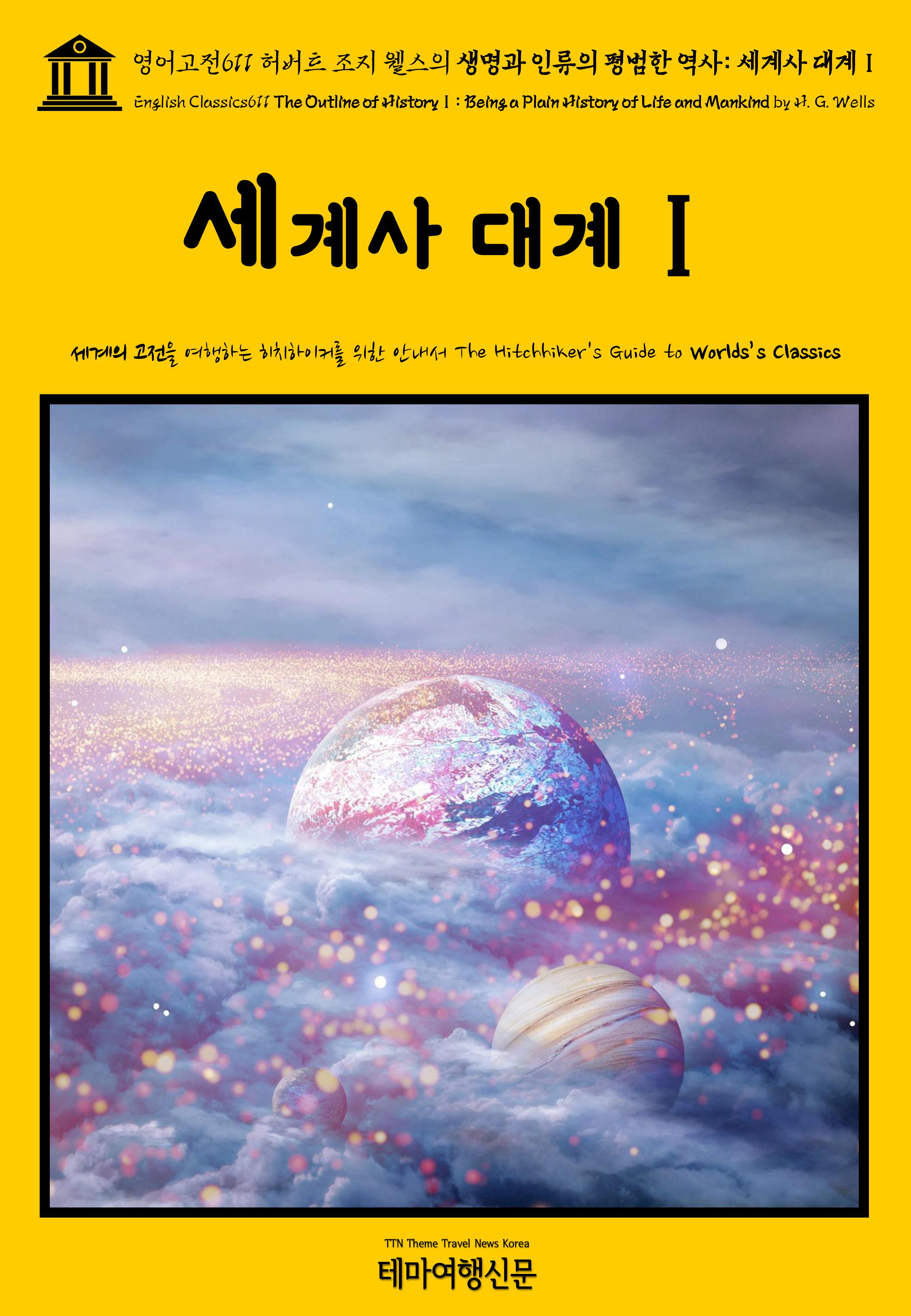▶ 인류의 모든 이야기(The Whole Story of Man) 또는 생명과 인류의 평범한 역사가 되는 것(Being a Plain History of Life and Mankind) : 세계사 대계(The Outline of History)(1920)는 허버트 조지 웰스(H. G. Wells)(1866~1946)의 역사서(history book)입니다. 웰스는 소설가이기 이전에 당대의 지식인이자 역사가, 그리고 교육에 관심이 많은 작가로써 1919년부터 지구의 기원(The origins of the Earth)부터 웰스가 직접 경험한 제1차 세계 대전(The Great War)(1914~1918)까지 세계역사를 연대기별로 일목요연하게 정리해 격주로 연재하기 시작하였습니다. 1920년 연재한 원고를 세계사 대계(The Outline of History)(1920)란 이름의 단행본으로 출간하였으며, 영국을 비롯한 세계 각지에 번역 출간될 정도로 큰 인기를 끌었습니다.
현재까지 최소 200만부 이상이 판매되었으며, 당대 영국 고등 교육기관에서 역사 교육을 위한 필독서로 사랑받았습니다. 또한 조지 웰스는 세계 각지의 오류에 대한 지적을 겸허히 수용하였고, 1937년까지 자신이 직업 원고를 수정하여 개정판을 발간하였습니다. 원고의 완성도 못지않게 당대 유럽인의 우생학과 제국주의에 대한 지지에도 불구하고, 인종주의와 문명적 우월성을 주장하는 이론(theories of racial and civilizational superiority)을 비판한 대목은 현대의 독자에게도 눈여겨볼 만합니다.
▶ THE RACES OF MANKIND. In the early Neolithic Period in Europe?it may be 10,000 or 12,000 years ago or so?man was differentiating all over the world, and he had already differentiated into a number of varieties, but he has never differentiated into different species. A “species,” we must remember, in biological language is distinguished from a “variety” by the fact that varieties can interbreed, while species either do not do so or produce offspring which, like mules, are sterile. All mankind can interbreed freely, can learn to understand the same speech, can adapt itself to co-operation.
인류의 종(種). 10,000 ~ 12,000년 전쯤으로 추정되는 유럽의 초기 신석기 시대에 인간은 전 세계적으로 분화하고 있었고 이미 많은 변종으로 분화했지만 다른 종으로 분화한 적은 한 번도 없습니다. 생물학적 언어에서 "종"은 품종이 서로 교배할 수 있는 반면 종은 그렇게 하지 않거나 노새처럼 불임의 자손을 낳는다는 사실에 의해 "다양성"과 구별된다는 사실을 기억해야 합니다. 모든 인류는 자유롭게 교배할 수 있고 같은 말을 이해하는 법을 배울 수 있으며 협력에 적응할 수 있습니다.
▶ 그가 사망한 이후에는 영국 편집자 레이몬드 포스트게이트(Raymond Postgate)(1896~1971)가 제2차 세계 대전(Second World War, WWII)(1939~1945)을 추가하고, 작가의 아들 G. P. 웰스(G. P. Wells)(1901~1985)가 선사시대에 대한 최신 이론을 추가하는 등 지속적으로 업데이트하였습니다. 테마여행신문 TTN Korea 영어고전(English Classics)과 함께 어제도, 오늘도, 내일도 멋진 문학여행을! B
▶ THE EARTH IN SPACE AND TIME. THE earth on which we live is a spinning globe. Vast though it seems to us, it is a mere speck of matter in the greater vastness of space. Space is, for the most part, emptiness. At great intervals there are in this emptiness flaring centres of heat and light, the “fixed stars.” They are all moving about in space, notwithstanding that they are called fixed stars, but for a long time men did not realize their motion. They are so vast and at such tremendous distances that their motion is not perceived.
공간과 시간의 지구. 우리가 살고 있는 지구는 회전하는 지구입니다. 우리가 보기에는 방대해 보이지만 더 넓은 공간에 있는 물질의 한 조각에 불과합니다. 공간은 대부분 공허합니다. 이 공허함 속에 열과 빛의 중심인 “고정 별”이 아주 간격을 두고 번쩍입니다. 그것들은 모두 고정성이라고 불림에도 불구하고 우주에서 움직이고 있지만 오랫동안 사람들은 그들의 움직임을 깨닫지 못했습니다. 그것들은 너무 광대하고 너무 먼 거리에 있어서 그들의 움직임이 감지되지 않습니다.
▶ CHANGES IN THE WORLD’S CLIMATE. THE Record of the Rocks is like a great book that has been carelessly misused. All its pages are torn, worn, and defaced, and many are altogether missing. The outline of the story that we sketch here has been pieced together slowly and painfully in an investigation that is still incomplete and still in progress. The Carboniferous Rocks, the “coal-measures,” give us a vision of the first great expansion of life over the wet lowlands. Then come the torn pages known as the Permian Rocks (which count as the last of the Palæozoic), that preserve very little for us of the land vestiges of their age. Only after a long interval of time does the history spread out generously again.
세계 기후의 변화. 바위의 기록(The Record of the Rocks)은 부주의하게 오용된 훌륭한 책과 같습니다. 그 책의 모든 페이지는 찢어지고 닳고 훼손되었으며 많은 페이지가 완전히 사라졌습니다. 여기에서 스케치한 이야기의 윤곽은 아직 불완전하고 진행 중인 조사에서 천천히 그리고 고통스럽게 결합되었습니다. "석탄 대책"인 석탄기 암석은 우리에게 젖은 저지대에서 생명체가 처음으로 크게 확장되었다는 비전을 제시합니다. 그런 다음 페름기 암석(고생대의 마지막 것으로 간주됨)으로 알려진 찢어진 페이지가 나오는데, 이 암석은 당시의 땅 흔적이 거의 남아 있지 않습니다. 오랜 시간이 흐른 뒤에야 역사는 다시 아낌없이 펼쳐집니다.
▶ THE AGE OF MAMMALS. THE third great division of the geological record, the Cainozoic, opens with a world already physically very like the world we live in to-day. Probably the day was at first still perceptibly shorter, but the scenery had become very modern in its character. Climate was, of course, undergoing, age by age, its incessant and irregular variations; lands that are temperate to-day have passed, since the Cainozoic age began, through phases of great warmth, intense cold, and extreme dryness; but the landscape, if it altered, altered to nothing that cannot still be paralleled to-day in some part of the world or other.
포유류의 시대. 지질학적 기록의 세 번째 큰 부분 인 신생대(Cainozoic)는 오늘날 우리가 살고 있는 세계와 물리적으로 이미 매우 유사한 세계와 함께 시작됩니다. 아마도 낮이 처음에는 여전히 눈에 띄게 짧았지만 풍경은 그 성격상 매우 현대적이었습니다. 물론 기후는 시대에 따라 끊임없고 불규칙한 변화를 겪었습니다. 오늘날 온대 지역은 신생대 시대가 시작된 이래로 엄청난 따뜻함, 극심한 추위, 극심한 건조의 단계를 거쳤습니다. 그러나 풍경이 바뀌면 오늘날 세계의 어떤 곳이나 다른 곳에서 여전히 비교할 수 없는 아무것도 아닌 것으로 바뀌었습니다.






